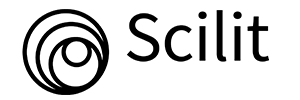
Journal Basic Info
**Impact Factor calculated based on Google Scholar Citations. Please contact us for any more details.Major Scope
- Chemoprevention
- Carcinomas
- Breast Cancer
- Pancreatic Cancer
- Haemato-Oncology
- Gastrointestinal Cancer
- Blood Cancer
- Cervical Cancer
Abstract
Citation: Clin Oncol. 2019;4(1):1625.DOI: 10.25107/2474-1663.1625
Breast Cancer Risk Assessment and Evaluation of RiskBased Screening Practices by Primary Care Providers: A Single Institution Experience
Henry Igid, Drew Payne, Sean Kow, Keeley Hobart, Teri Payne, Anita Sultan and Catherine Jones
Department of Oncology, Texas Tech University Health Sciences Center, USA
Department of Oncology, Comprehensive Cancer Centers of Nevada, USA
*Correspondance to: Anita Sultan
PDF Full Text Research Article | Open Access
Abstract:
Importance: Breast cancer risk assessment is a critical step towards identifying patients who may benefit from risk-based screening and chemoprevention. The utilization of chemoprevention in the US remains very low.
Objective: To determine if primary care providers belonging to different departments in our institution perform breast cancer risk assessment, risk-based screening, and prescribe chemoprevention for high-risk patients.
Design: Retrospective chart review of patients seen for annual preventive care visits at the Texas Tech University Health Sciences Center between Jan 1, 2014 to Dec 31, 2014 in the Internal Medicine (IM, n=1076), Family Medicine (FM, n=80), and Obstetrics and Gynecology (OB-GYN, n=59) was performed. Setting: Single-institution.
Participants: Charts of women who aged ≥ 35 to ≤ 78 and were seen between Jan 1, 2014 to Dec 31, 2014 for preventive health care visits were eligible for review. A total of 1220 charts were reviewed. Main Outcomes and Measures: Documentation of breast cancer risk assessment, chemoprevention, and for availability of data to calculate Gail scores were collected. Compliance to screening mammography per recommendations by NCCN, ACS, ACOG, and USPSTF guidelines was assessed by looking at utilization of mammograms in the past 2 years in eligible patients.
Results: No breast risk assessment was done among 1220 charts reviewed. Fraction of charts having complete data to calculate Gail score was 56.9% in OB, 9.4% in FM, and 1.7% in IM, and was statistically different between departments, χ2(2)=131.08, p<0.001. 149 patients (12.2%) were found to have high-risk for bFeast cancer based on Gail scores. No patients in our study were offered chemoprevention. Rates of compliance to screening mammogram across departments ranged from 45.74% to 81.58%. Conclusions and Relevance: Breast cancer risk assessment, risk-based screening, and chemoprevention is not adequately practiced by primary care providers in our institution. A significant fraction of women who are at high risk for breast cancer are not offered chemoprevention. OB and FM PCPs’ screening mammogram practices are more consistent with NCCN, ACS, and ACOG recommendations, compared to IM PCPs who follow USPSTF recommendations more consistently. Methods to improve education and awareness of breast cancer risk assessment and its implications for prevention and altered screening among high risk women are clearly indicated.
Keywords:
Cite the Article:
Igid H, Payne D, Kow S, Hobart K, Payne T, Sultan A, et al. Breast Cancer Risk Assessment and Evaluation of Risk-Based Screening Practices by Primary Care Providers: A Single Institution Experience. Clin Oncol. 2019; 4: 1625.













